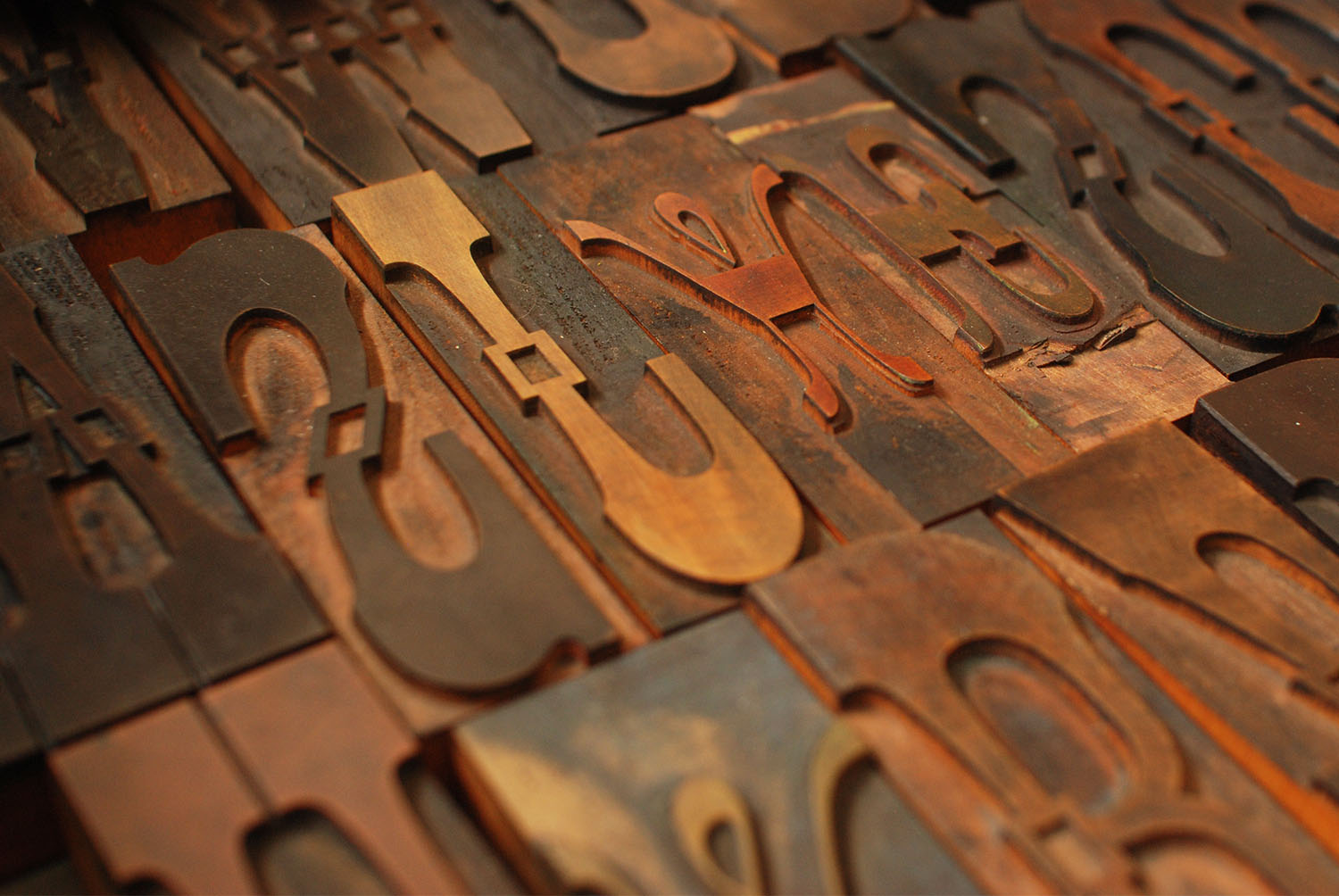Read More
Chromatic types, produced in register as corresponding pairs, were designed to be inked with two different colors and passed through the press twice, so that the first color would overlap the second in specified spots to create a third color.
Chromatic types were shown regularly in foundry type specimen books of the 1840s and 1850s. Edwin Allen produced the first Chromatic wood types, as shown by George Nesbitt in his 1841 Fourth Specimen of Machinery Cut Wood Type. Both William H. Page and J.G. Cooley showed several pages of Chromatic type in their c.1859 wood type specimen books. Page showed these types in most of his specimen books in the 1870s. The high point of Chromatic wood type production came in 1874 when the William H. Page Wood Type Co. issued its 100-page Specimens of Chromatic Type & Borders. Though Hamilton, Morgans & Wilcox, and Heber Wells all showed samples of Chromatic types through the rest of the century, none of these ever reached the level of intricate precision attained in Page’s 1874 masterpiece.






